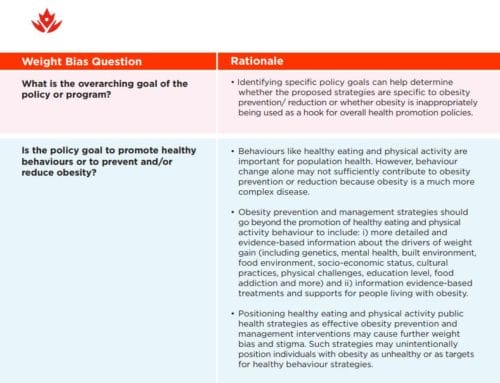Today’s post comes from Taniya S. Nagpal (PhD Candidate) and Matthew J. Fagan (MA Candidate). Dr. Harry Prapavessis (Director of the Exercise and Health Psychology Laboratory) also assisted with the editing.
The prevalence of smoking worldwide in 1960 was over 50% for males and 10.6 % for females and ever since has been on the decline with current statistics indicating that the global prevalence is around 31.1% for men and 6.2 % for women (Ng et al., 2014). The steady decrease in smoking for the developed world was partially initiated by the plethora of research linking smoking with negative health consequences such as many different types of cancer (most documented: lung, throat, and stomach), heart disease, chronic obstructive pulmonary disease, and many others (U.S. Department of Health Services, 1988). As early as 1965, health warnings were required to be on cigarette packages in Canada (Stanhope et al., 1964). In Canada today, around 16 % of individuals are classified as smokers (Health Canada, 2017). Each year less people are initiating the behaviour and more are quitting the habit which not only impacts the individuals but their families and the general public (Ng et al., 2014). Certainly the goal is abstinence to prevent the harmful health outcomes that come along with the behaviour and through effective action-planning and persistence, achieving this goal is getting closer.
If smoking cessation rates have trended in the right direction, an important question to answer is…why? Canada, for instance, took an aggressive approach (i.e., equipping the country with tobacco control division in every health unit, countless non-profit organizations such as the Canadian Cancer Society and policy changes) to tobacco control after recognizing the undeniable harm to the population. The tobacco control units not only assist in smoking cessation but proactively target younger populations for prevention of tobacco use, and assist in the development, advocacy, and implementation of policy (Middlesex-London Health Unit, 2018). There are also free smoking cessation products available to the public to ensure universal access to all Canadians. The Canadian Cancer Society actively looks for innovative ways to help individuals stop smoking. For instance, they currently provide a smoker’s helpline free of charge and are leading Walk or Run to Quit which is utilizing the benefits seen from exercise to assist with quitting (Prapavessis et al., 2016; Canadian Cancer Society, 2018).
Canadian policy changes played an integral role in the decrease of smoking prevalence. With the Canadian Government’s action plan to reduce smoking prevalence to under 5% by 2035, they have implemented graphic health warnings on tobacco products, increased taxes on tobacco products, and banned flavoured tobacco in an attempt to “butt-out” the harmful effects of smoking (Health Canada, 2017) . In 2001, Canada showed the world they were willing to be a leading force of tobacco control with the implementation of graphic health warnings on cigarettes that cover 50 % of the front and 50% of the back of the packaging (Tobacco Labelling Resourec Centre, 2018). These pictorial health warnings have reliably been shown to change opinions and make individual who smoke consider quitting more frequently (Christie & Etter, 2004). Currently, Canada is raising the taxes on tobacco products which makes these products less desirable to the public (Ontario Ministry of Finance, 2018). This relationship of tax increases to decrease tobacco consumption is highlighted in the article by Meier and Licari (1997). The intentions of the Canadian Government when they banned flavoured tobacco products were to better protect the next generation of potential smokers (Health Canada, 2017) as younger users of tobacco are more likely to be using the flavoured variety (Villanti, Richardson, Vallone, & Rath, 2013). The methods used to decrease tobacco consumption in the public take a multi-faceted approach to tackle disengagement of youth from the behaviour, smoking cessation from current smokers, and a healthier country.
Can we learn from the efforts that have been made to reduce the incidence of smoking and the associated negative health outcomes and apply it to other diseases such as obesity? Obesity may be prevented by leading a healthy lifestyle that includes physical activity and nutrition. Individuals who have obesity may benefit from treatment options that include lifestyle behaviour change. Sound familiar? When we learned the direct association of a lifestyle behaviour (smoking) to a chronic disease (lung cancer, among many others) we became proactive in promoting lifestyle behaviour change (quit/prevent smoking) and here is what we can do to apply the same motivation to obesity:
| What we did to reduce incidence of smoking? | What can we do to reduce the incidence of obesity? |
| 1. Marketing to youth – banned flavoured tobacco and included warning messages on all products. | 1. Marketing unhealthy foods (fast food, breakfast cereal, snack products etc.) have been clearly shown to specifically target youth (Berry & McMullen, 2008; McGinnis, Cootman, & Kraak, 2006). We can learn from the smoking model by advocating for neutral advertising for these food products and advocate for easy to read warning messages regarding the potential harmful health effects of excess sugar intake. |
| 2. Reducing the visibility of smoking products – All tobacco products must be covered and an individual must request to purchase the product from the shop attendant. | 2. Super markets have been shown to be designed to engage the buyer in purchasing unhealthy food items (Berry & McMullen, 2008). For example, at the checkout line we find all of the chocolate bars (Berry & McMullen, 2008). We should advocate for grocery store redesign; specifically recommending that unhealthy foods are removed from the store entrance and exit to reduce their visibility. Furthermore, we should implement policies that address the built environment; specifically to assure that our neighborhoods allow for accessible physical activity (e.g. safe walking and bike paths and playgrounds). |
| 3. Health promotion efforts to implement and advocate for policy change – Health units across the country and not-for-profit organizations are dedicated towards advocating for smoking cessation policies and providing accessible smoking cessation programs. | 3. We are making steps in the right direction with organizations such as the Canadian Obesity Network, but as obesity is a disease that impacts the entire country we need support at all levels of government. Local governments need to have units dedicated towards developing, advocating and implementing policy change to improve lifestyle habits (such as the two examples above). |
| 4. Health promotion efforts to provide accessible smoking cessation programs – Health units and not-for-profit organizations are implementing programs for all age groups (e.g. free nicotine patches) to support smoking cessation. | 4. Cost has been identified as a barrier to physical activity for all age groups (Salmon, Owen, Crawford, Bauman, & Sallis, 2003). Currently only 15% of the Canadian population meets physical activity recommendations despite the well-known benefits of exercise including obesity prevention and treatment (Warburton, Nicol, & Bredin, 2006). We need to support initiatives such as Exercise is Medicine or ParticipAction that aim to make physical activity more accessible. Furthermore, at all levels of government we need champions that will advocate for physical activity and assure that it is prioritized (for example, assuring it is a part of school curriculums). Additionally, research has shown that the cost of healthy foods is much more when compared to unhealthy foods such as readily available meals from fast food restaurants (Darmon and Drewnowski, 2015). This is a barrier to accessing healthy foods and a motivator for unhealthy foods. Therefore policies and funding agencies should consider focusing on determining effective strategies to reduce the cost for buying and eating healthy foods. |
| 5. Education programs – Smoking behaviour and its associated health outcomes are communicated to children, and the messaging continues into adulthood with television commercials, health unit advertising and messages on tobacco products. | 5. We need to increase opportunities for society to learn about the harmful impact of an unhealthy diet and physical inactivity AND also provide education on how to overcome barriers. Examples may include incorporating cooking classes at school and free physical activity programming for the community. |
Smoking remains to be a public health concern and the end goal would be to have all Canadians safe from developing chronic diseases such as lung cancer due to tobacco products. The decline in smoking cessation and the increase in awareness about the harmful effects of using tobacco products did not happen overnight and the work continues. However, we can learn from some of the initiatives that have been done and apply it to other behaviours such as increasing physical activity and healthy dietary habits and reducing chronic disease risks including obesity.
Reference list:
Berry, B., & McMullen, T. (2008). Visual communication to children in the supermarket context: Health protective or exploitive? Agriculture and Human Values, 25(3), 333–348. https://doi.org/10.1007/s10460-007-9110-0
Centre, T. L. R. (2018). Legislation and Regulations. Retrieved January 1, 2018, from https://www.tobaccolabels.ca/countries/canada/
Christie, D., & Etter, J. F. (2004). Utilization and impact of cigarette pack covers illustrated with antismoking messages. Evaluation and the Health Professions, 27(2), 107–118. https://doi.org/10.1177/0163278704264050
Darman, N., & Drewnowski, A. (2015). Contribution of food prices and diet cost to socioeconomic disparities in diet quality and health: A systematic review and analysis. Nutrition Reviews, 73(10), 643-660.
Finance, O. M. of. (2018). Tobacco Tax. Retrieved January 1, 2018, from https://www.fin.gov.on.ca/en/tax/tt/
Health Canada. (2017). Seizing the Opportunity: The Future of Tobacco Control in Canada, 1–21. Retrieved from https://www.canada.ca/content/dam/hc-sc/documents/programs/future-tobacco-control/future-tobacco-control-consultation-eng.pdf
McGinnis, J. M., Cootman, J. a., & Kraak, V. I. (2006). Food Marketing to Children and Youth: Threat or Opportunity? Journal of Developmental & Behavioral Pediatrics (Vol. 30). Washington, DC: National Academies Press. https://doi.org/10.1097/01.DBP.0000349916.04784.91
Meier, K. J., & Licari, M. J. (1997). The effect of cigarette taxes on cigarette consumption, 1955 through 1994. American Journal of Public Health, 87(7), 1126–1130. https://doi.org/10.2105/AJPH.87.7.1126
Ng, M., Freeman, M. K., Fleming, T. D., Robinson, M., Dwyer-Lindgren, L., Thomson, B., … Gakidou, E. (2014). Smoking prevalence and cigarette consumption in 187 countries, 1980-2012. JAMA – Journal of the American Medical Association, 311(2), 183–192. https://doi.org/10.1001/jama.2013.284692
Prapavessis, H., De Jesus, S., Fitzgeorge, L., Faulkner, G., Maddison, R., & Batten, S. (2016). Exercise to Enhance Smoking Cessation: the Getting Physical on Cigarette Randomized Control Trial. Annals of Behavioral Medicine, 50(3), 358–369. https://doi.org/10.1007/s12160-015-9761-9
Salmon, J., Owen, N., Crawford, D., Bauman, A., & Sallis, J. F. (2003). Physical activity and sedentary behavior: A population-based study of barriers, enjoyment, and preference. Health Psychology, 22(2), 178–188. https://doi.org/10.1037/0278-6133.22.2.178
Services, U. S. D. of H. and H. (1988). The health consequences of smoking: a report of the Surgeon General. The Journal of the Maine Medical Association. https://doi.org/10.2307/1973644
Society, C. C. (2018). Get help to quit smoking. Retrieved January 1, 2018, from https://www.cancer.ca/en/support-and-services/support-services/quit-smoking/?region=on
Stanhope, B.-J., Burdette, W. J., Cochran, W. G., Farber, E., Fieser, L. F., Furth, J., … Seevers, M. H. (1964). Report of the Advisory Committee to the Surgeon General of the Public Health Service. … , Education and Welfare, Public Health Service …, 1–386. Retrieved from https://profiles.nlm.nih.gov/NN/B/B/M/Q/_/nnbbmq.ocr
Unit, M.-L. H. (2018). Tobacco Control. Retrieved January 1, 2018, from https://www.healthunit.com/Tobacco
Villanti, A. C., Richardson, A., Vallone, D. M., & Rath, J. M. (2013). Flavored tobacco product use among U.S. Young Adults. American Journal of Preventive Medicine, 44(4), 388–391. https://doi.org/10.1016/j.amepre.2012.11.031
Warburton, D. E. R., Nicol, C. W., & Bredin, S. S. D. (2006). Health benefits of physical activity: the evidence. CMAJ : Canadian Medical Association Journal = Journal de l’Association Medicale Canadienne, 174(6), 801–9. https://doi.org/10.1503/cmaj.051351
Related Reads:
Warner, K.E. (2004). Lessons for addressing obesity: From the history of tobacco control. Memo prepared for The Acceleration Meeting. Princton: New Jersey.
Garson, A., & Englehard, C.L. (2007). Attacking obesity: Lesson from smoking. Journal of the American College of Cardiology, 49(6), 1673-1674.
Koplan, J.P., Liverman, C.T., & Kraak, V.I. (2005). Preventing childhood obesity: Health in the balance. Washington: The National Academies Press.
Ontario Medical Association Policy Paper. (October 2012). Applying lessons learned from anti-tobacco campaigns to the prevention of obesity. Ontario Medical Reviews, 12-15.
Learn more about the Exercise and Health Psychology Laboratory by visiting:https://www.ehpl.uwo.ca/



